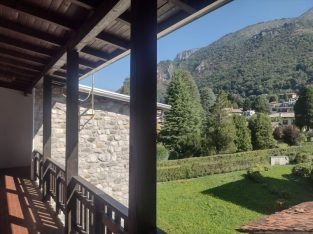Exploring Milano Porta Romana
It is generally agreed by both inhabitants of Milan and visitors that Porta Romana is one of the most charming areas of the city. The district is a mix of the old and the new with elegant, mainly residential streets, traditional shops and eateries, occasional green spaces, wide tree-lined avenues and a gently buzzing nightlife. It’s Milan’s Greenwich Village or Hampstead, a relaxed, easygoing area with lots of cultural highlights but without the hipster edge of newer areas of the city such as Nolo.

The name Porta Romana (taken from the city gate that travellers headed for Rome would originally exit from) is a throwback to the time when Milan was surrounded by a series of massive defensive walls that could only be entered via the main gates (similarly, Porta Venezia, Porta Genova, etc). The current arch that dominates Piazzale Medaglie d’Oro was completed by 1596 on the orders of King Philip III of Spain, which occupied Milan in that period, just in time for the Spanish Queen Margaret’s visit to the city. You can also see part of the original city wall here. In fact, this is one of the oldest areas of Milan offering a glimpse of its ancient architecture that has largely disappeared. The existing fragment of the huge red brick wall now shields the garden area of the QC Termemilano spa, whose main treatment rooms and pools are housed in an elegant Art Nouveau building formerly belonging to ATM, the city’s public transport company. One of the spa’s saunas is actually a converted tram.

The best way to explore Porta Romana is by wandering around, stopping off at the most interesting places and discovering its hidden corners on the way. In this article, I will highlight some of the best places to visit that you can reach on foot starting from Porta Romana, which is on the yellow line 3 metro and the line 9 tram route; but whichever direction you head in from the great stone arch you will discover something new and surprising.
The main street leading south-west from Piazzale Medaglie d’Oro is Corso Lodi, which will take you to Piazza Lodi. There are bars, restaurants and shops aplenty in and around this wide boulevard.
For English-speaking expats, Porta Romana is synonymous with Pogue Mahone, the best-known Irish pub in Milan, if not the whole of Italy. In fact, “Pogue” is much more than a pub. Over the years it has gradually expanded from its original site in Via Salmini and now takes up a considerable stretch of Corso Lodi. Mahone’s Restaurant serves hearty pub grub, including gourmet burgers and fish’n’chips. As you would expect, their range of stouts and ales is excellent and on St Patrick’s Day, this is the place in Milan place to go to for a pint of Guinness and a large helping of craic: its claim to fame is the 1995 visit of legendary Irish musician and drinker Shane MacGowan of the Pogues, who was in Milan playing a gig with his other band the Popes. All year round, Pogue Mahone’s has music, all major sporting events on large screens and beer. What more can you ask for?
Further down Corso Lodi you can find Marlà Pasticceria, a pastry shop and café which serves freshly-made croissants, cakes and coffee. Marvel at the precision and artistry of their small cubes of glazed chocolate and cream topped with pieces of fruit: they’re like miniature sculptures exploding with taste.
On the other side of the road you will see Giannasi 1967, an unassuming kiosk that has actually been actually an important cultural and gastronomic landmark in the city for over 50 years. A real Milanese institution, the main activity of Giannasi is roasting and selling chickens. Porta Romana locals and people from across the city come here to buy its specially-roasted chicken (including a spicy version), as well as other Italian delicacies. The business is basically take-away, although there are a few places where you can stand and eat – or the nearby tiny park area where you can sit down and scoff. A family-owned-and-run business, Giannasi has an incredibly strong brand (extending to its own beer, Birrando) which extends far beyond the kiosk itself. There will never be a global chain of Giannasi-branded outlets rivalling KFC or Shake Shack. This one tiny kiosk is the sole point of sale for its legendary chicken.
Going on to the end of the road, you soon reach Piazza Lodi, a busy roundabout with more roads leading off it, and more bars and restaurants. Nearby is the abandoned railway goods yard known as Scalo Romano. For years, this has been a blighted area with rusting rails and wagons, tussocky grass and a forlorn air. That’s all set to change as this will be the site of the Olympic Village for the Milano-Cortina 2026 Winter Olympics.
The area is already home to some significant cultural and business hubs: Fondazione Prada with its iconic tower is located here. Established by Miuccia Prada and Patrizio Bertelli in 1993, the cultural centre that bears the name of one of Milan’s most celebrated fashion brands offers an eclectic mix of art exhibitions, film and live performances. In 2015, the former distillery was transformed by OMA studio and Rem Koolhaas into a complex that combines the existing structures with new additions such as the Podium, Cinema and the Tower, which opened in 2018. The nine floors of the Tower feature a variety of exhibition spaces and there is the Ristorante Torre offering panoramic views of the city. The site plays host to the “Atlas” project, showcasing contemporary art from 1960-2016. There is also an area dedicated to French New Wave film director Jean-Luc Godard, which recreates his atelier and recording studio; the cinema honours the director of Breathless and Alphaville. (Art house movie buffs should also check out the bijou Cinemino club and bar in Porta Romana’s Via Seneca). Another special feature of the Prada Foundation is its Bar Luce designed by meticulous cult movie director Wes Anderson (The Grand Budapest Hotel). With its distinctive retro feel, it faithfully recreates the atmosphere of a traditional Milanese bar sporting vintage pinball machines and green formica table tops. You can also find a freely accessible Study Room and the Children’s Academy, offering educational workshops and other events.
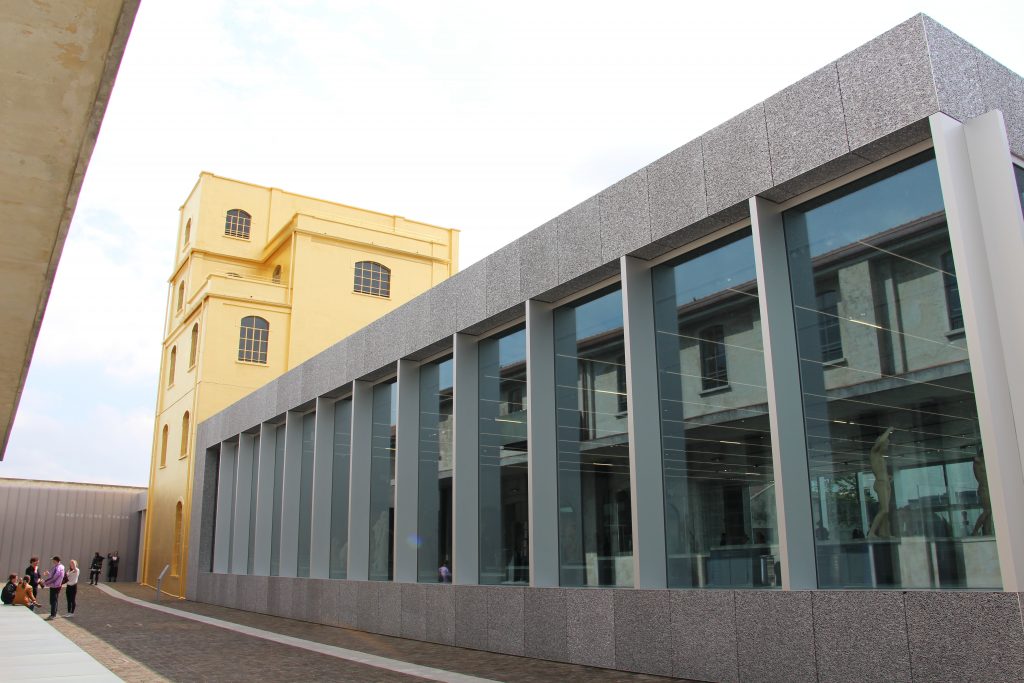
Nearby is Talent Garden Calabiano, the largest site of the coworking and start-up hub, which provides a funky workspace for young entrepreneurs, fledgling companies and freelancers. The campus includes gardens and a terrace with a swimming pool.
Rebranded as Symbiosis, this former goods yard will soon be home to major companies including Moncler, LVMH, Fastweb and Snam, as well as the Olympic Village. As with other former industrial areas of Milan that have been transformed in recent years, such as Porta Nuova, Portello and Bocconi University’s new campus on the site of a former processing plant, Symbiosis will combine sustainable architecture with greenery, creating a state-of-the-art business and residential area on the fringe of Porta Romana.
Going north-west from Piazzale Medaglie d’Oro up to Crocetta and the centre, you can pass one of Milan’s creepiest landmarks: Palazzo Acerbi, originally built for Sforza captain Pietro Maria Rossi in 1577, later became the residence of Ludovico Acerbi, Marquis of Cisterna and senator, by 1615. Amid the ravages of the plague, the marquis was notorious for swanning around the city in a carriage with a retinue servants in green livery. He also threw grand parties, although neither he or any of his guests seemed to fall ill, which sparked rumours that the Devil roamed the halls of the palazzo. Ironically, the plague did carry Ludovico off, but the demonic rumours persisted. Another curious feature of the building is a cannon ball embedded in the wall of the façade. According to the plaque below it, the ball was fired on on 20th March 1848 during the Cinque Giornate, the celebrated five days of insurrection that led to the First Italian War of Independence. The Austrians, under the command of Marshal Radetzky (he of the Radetzky March by Strauss), were driven from the city. Piazza Cinque Giornate, which lies to the north of Porta Romana has a famous and dramatic monument dating from 1895 which commemorates the uprising.
Crocetta is also home to the Teatro Carcano, one of Milan’s oldest and most important theatres. Built by Giuseppe Carcano in 1801, it occupies the site of a former convent, San Lazzaro. The theatre was the venue for the Milan premiere of Verdi’s opera La battaglia di Legnano (1859), the first concert of Wagner’s music to be given in the city (1883), and the Italian premiere of Massenet’s Manon (1893). The Crocetta Pannini d’Autore bar next to the theatre is famous for its delicious pannini and memorabilia from the Carcano: it’s also a good place for spotting actors and other celebs from the theatre.
Moving north east of Porta Romana along Viale Montenero, you can discover some unusual places such as the Bagni Misteriosi, a stunning lido and cultural venue dating from the 1930s with two swimming pools that become ice rinks during the winter. The “mysterious baths” are part of the development that includes Teatro Franco Parenti, a minimalist theatre staging classics and contemporary works, as well as hosting workshops for children, screening films and presenting stand-up comedy. In fact, the area has a strong association with 20th century theatre, since Dario Fo and his wife Franca Rame lived in Porta Romana. The Palazzina Liberty in Parco Formentano was the workshop of the couple’s theatre company in the 1970s. The building, featuring an Art Nouveau façade, floral reliefs and decorative ceramic tiles has been dedicated to the 1997 Nobel Prize in Literature winner and his comedian wife, who collectively formed a powerhouse of Italian theatre, comedy and political activism.
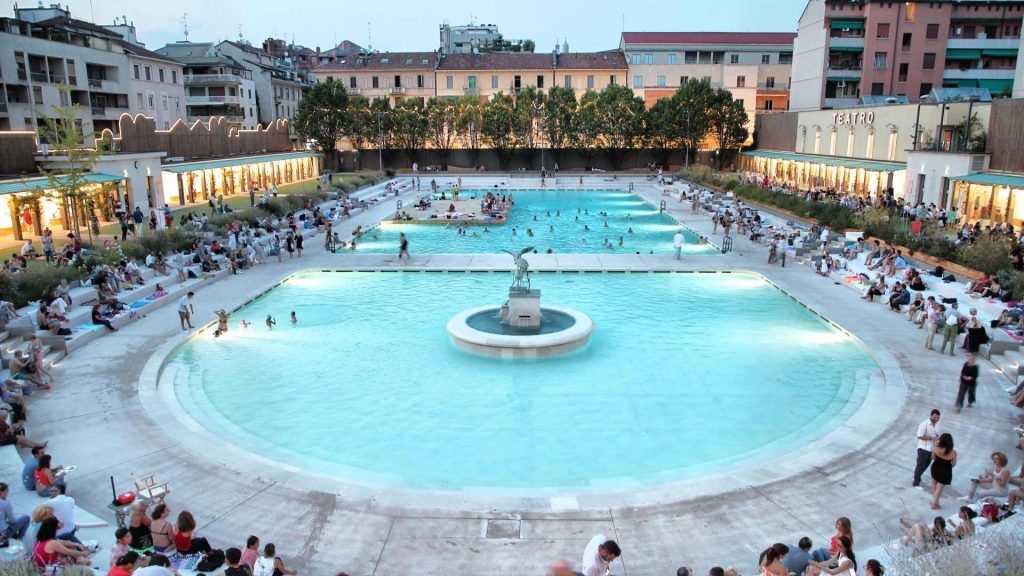
Other highlights of this part of Porta Romana include the Giardini della Guastalla, an elegant park with a baroque pond, in front of the Ca’ Granda Historical Archive, part of the State University of Milan and a former hospital. In fact, the area has long been associated with medicine and is home to the important Policlinico di Milano. The new M4 line metro station Sforza Policlinico is currently under construction.
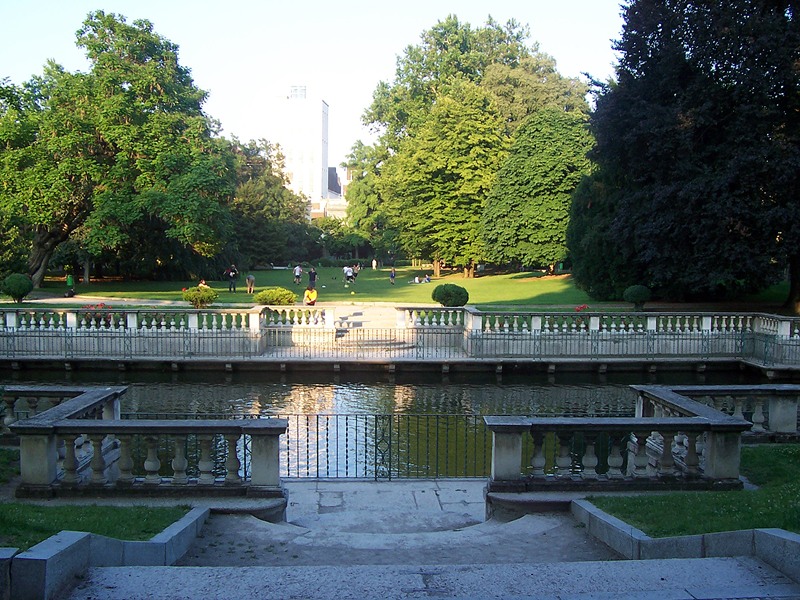
The nearby Central Synagogue designed by Luca Beltrami (who also restored the Castello Sforzesco) dates from 1892 and its architectural style has oriental, Byzantine and classical influences. The Rotonda della Besana, built between 1695 and 1732, houses a deconsecrated church and cemetry. The lobate hectagonal colonnade portico is one of the most picturesque locations in Milan. The complex is used for cultural and social events and is home to the Museo Dei Bambini Milano (Muba), the Milan Children’s Museum, which organises projects and exhibitions for youngsters.
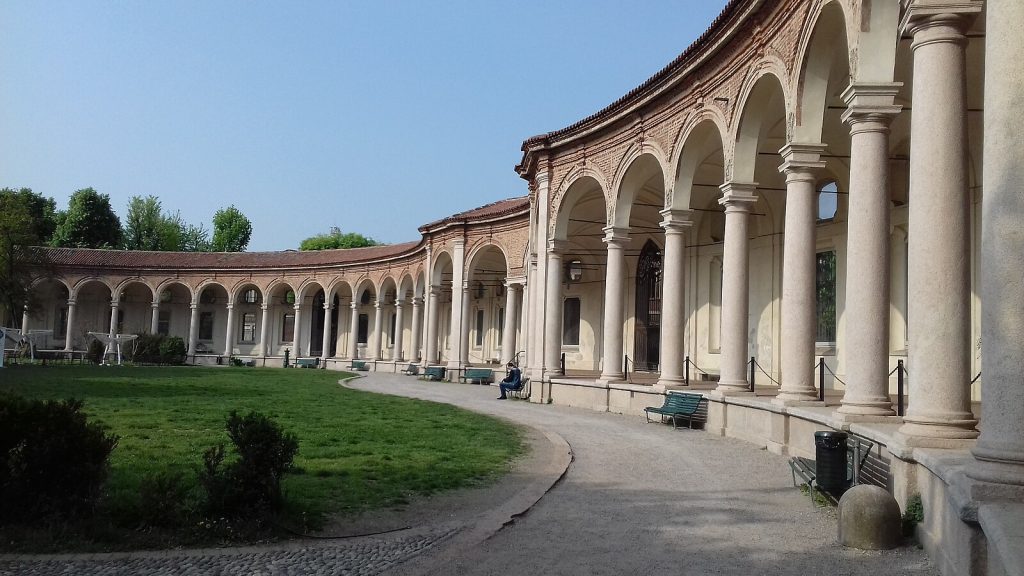
Having explored Porta Romana, one of the best places to have lunch is Un posto a Milano (“A place in Milan”), a superb restaurant located in Cascina Cuccagna, an authentic 18th-century farmhouse complete with courtymiard, vegetable garden and orchard. They offer a “light” lunch menu featuring organic seasonal ingredients as well as a dinner menu of classic dishes with a contemporary twist, such as the goose leg with herbs, spices and red wine served with Rostrato Rosso di Rovetta corn polenta.
If you like to combine theatre, live music or poetry with an intimate dining experience in elegant surroundings, Après-Coup in Via privata della Braida (just off Viale Montenero) is just the ticket. Their bistrot serving fine cuisine with an excellent wine list is a homage to the early 1900s: the chandeliers and wall sconces, cutlery and sugar bowls, porcelain tea services, sofas, armchairs, dining tables and chairs are original pieces dating from the late 1800s to the early 1940s. I was fortunate enough to see the London-based poet Jan Noble perform his epic Body 115 there a few years ago, as well as his more recent “A Poem for the Shelley Bicentennial”.
Article by Robert Dennis for Easy Milano
Robert Dennis is a writer and Business English teacher based in Milan. He has been teaching for other 30 years both in the UK and in Italy. A long-time collaborator with John Peter Sloan, Robert published Business English (Gribaudo) in 2020. The book was launched with “Il Sole 24 Ore” and sold in newsstands throughout Italy. Robert has a website for people who want to learn Business English: PayAsYouLearn.com. The site features keywords and phrases, audio and exercises to help professionals improve their language skills. A graduate in English from Oxford University, Robert is a regular contributor to Easy Milano who often writes about plays staged in English in Milan and other cultural events in the city. He is also a translator and “buongustaio” who loves Italian food! robertdennis.it

You must be logged in to post a comment.




